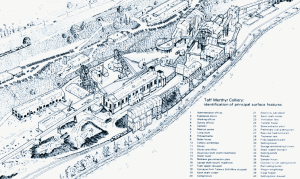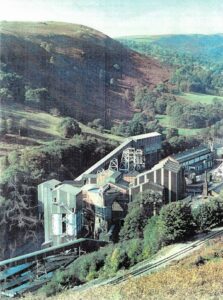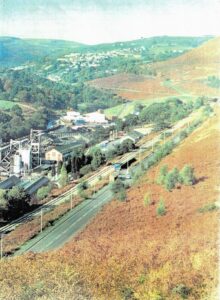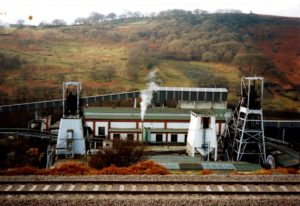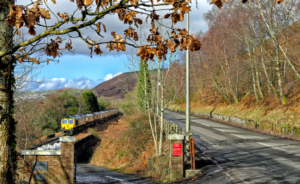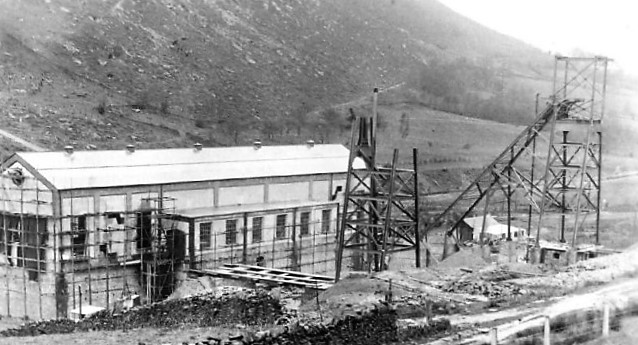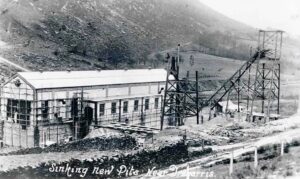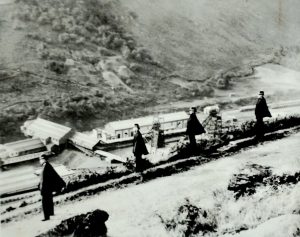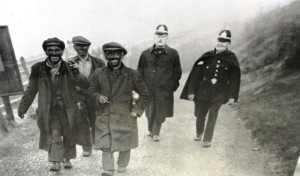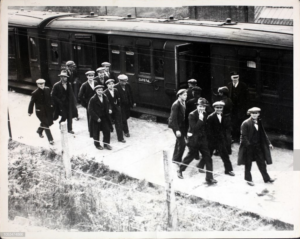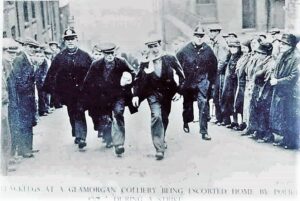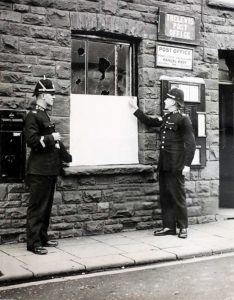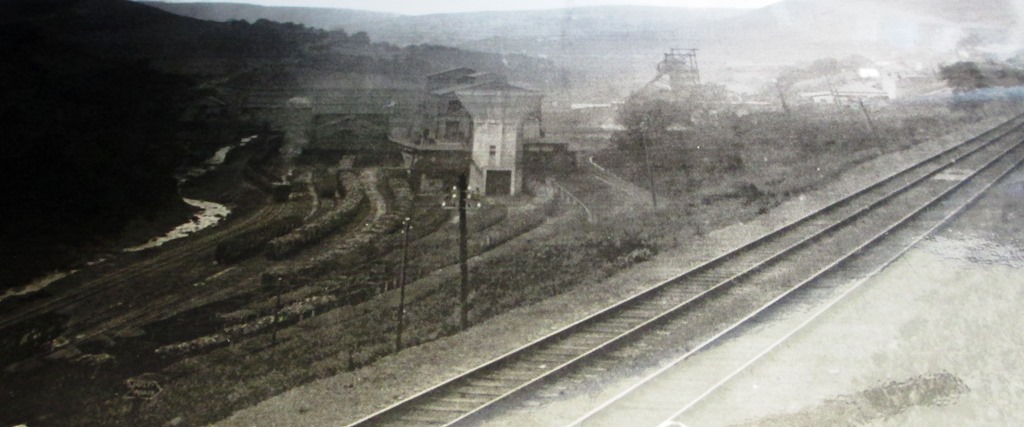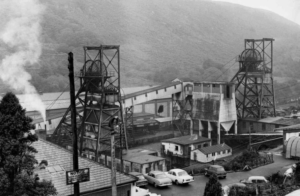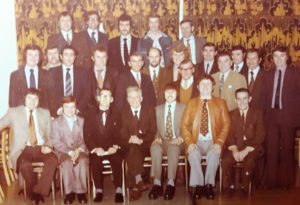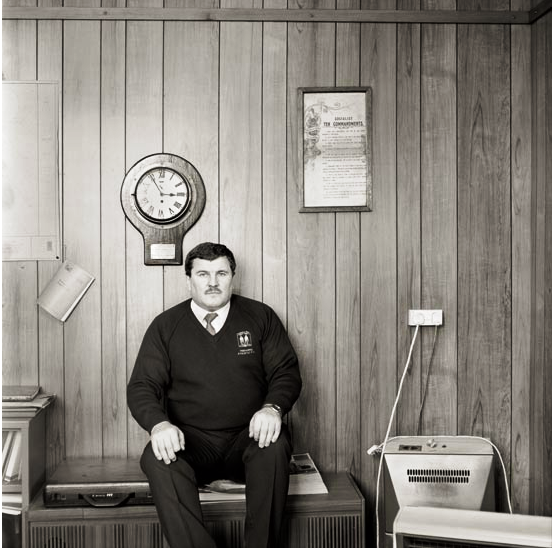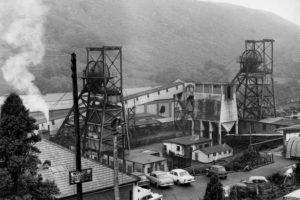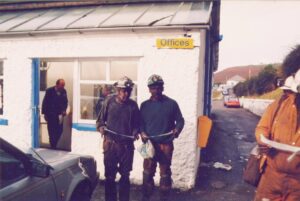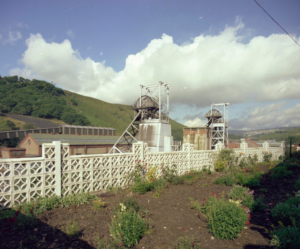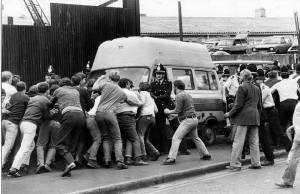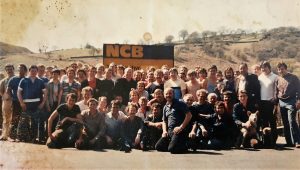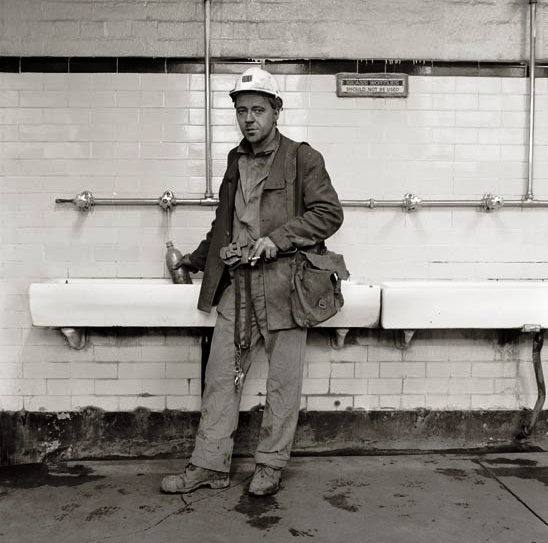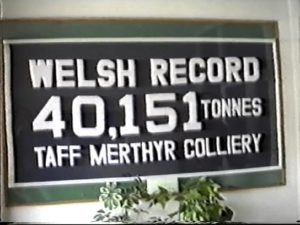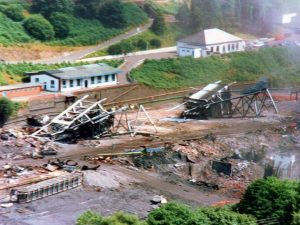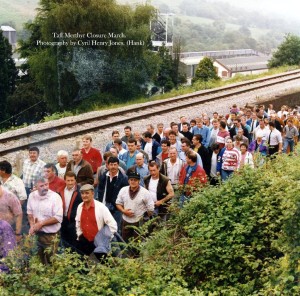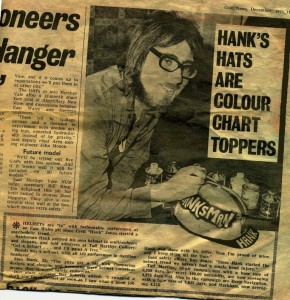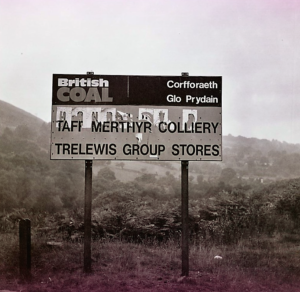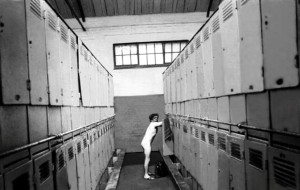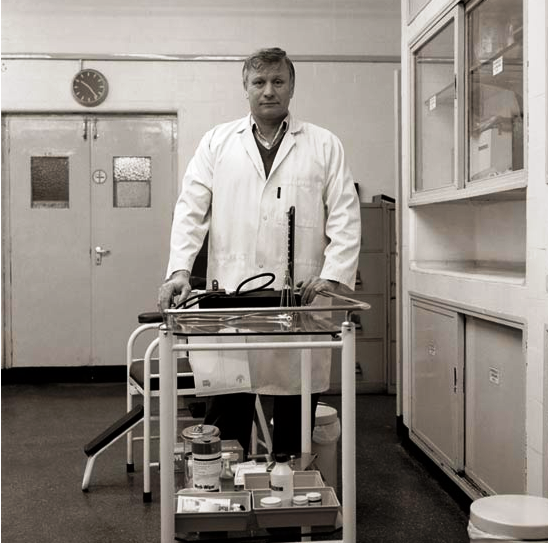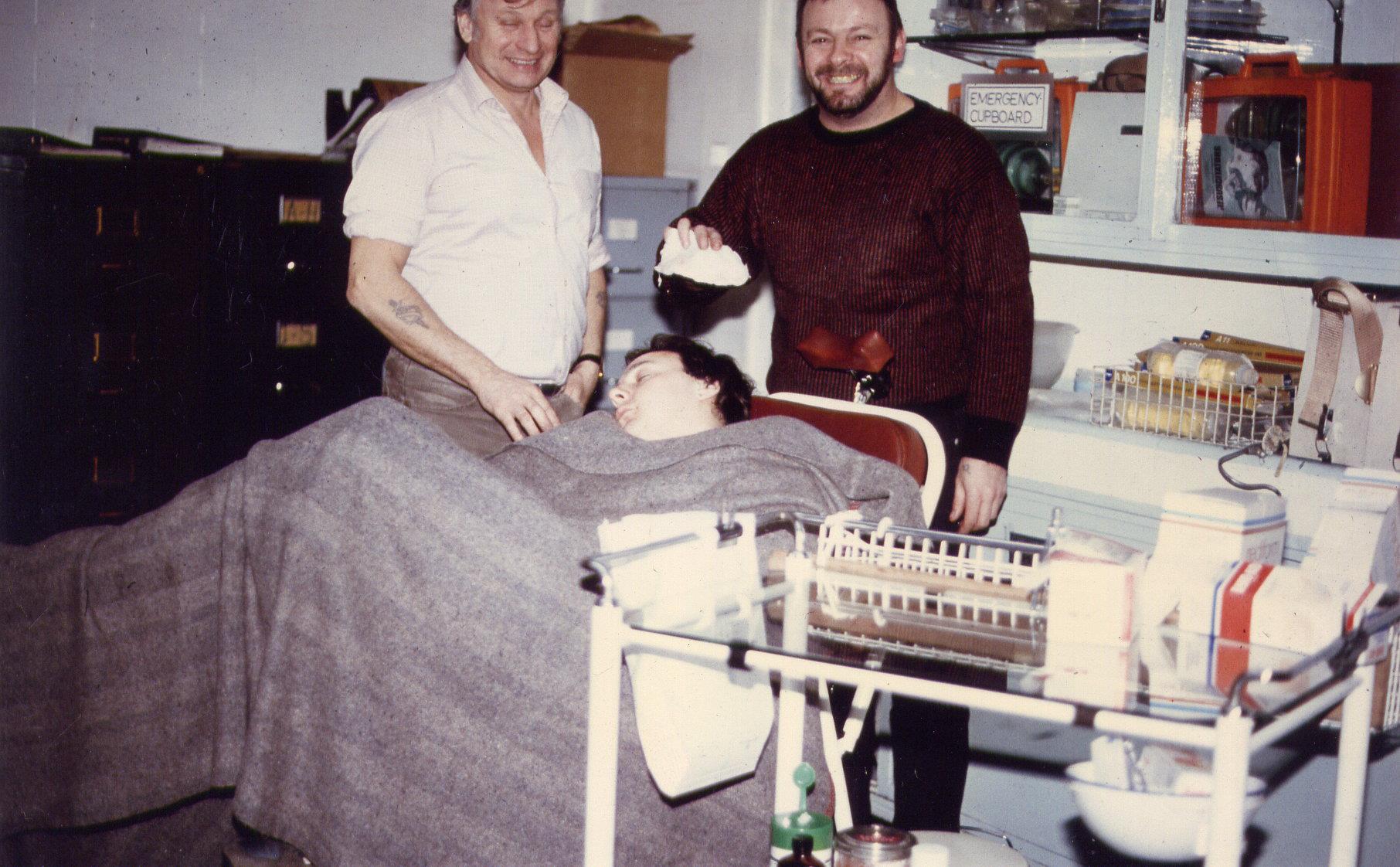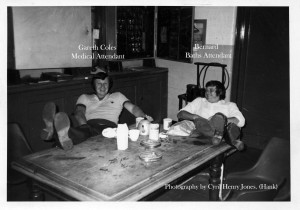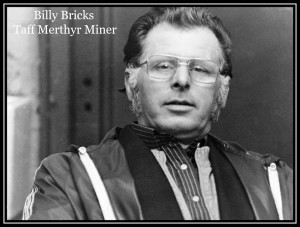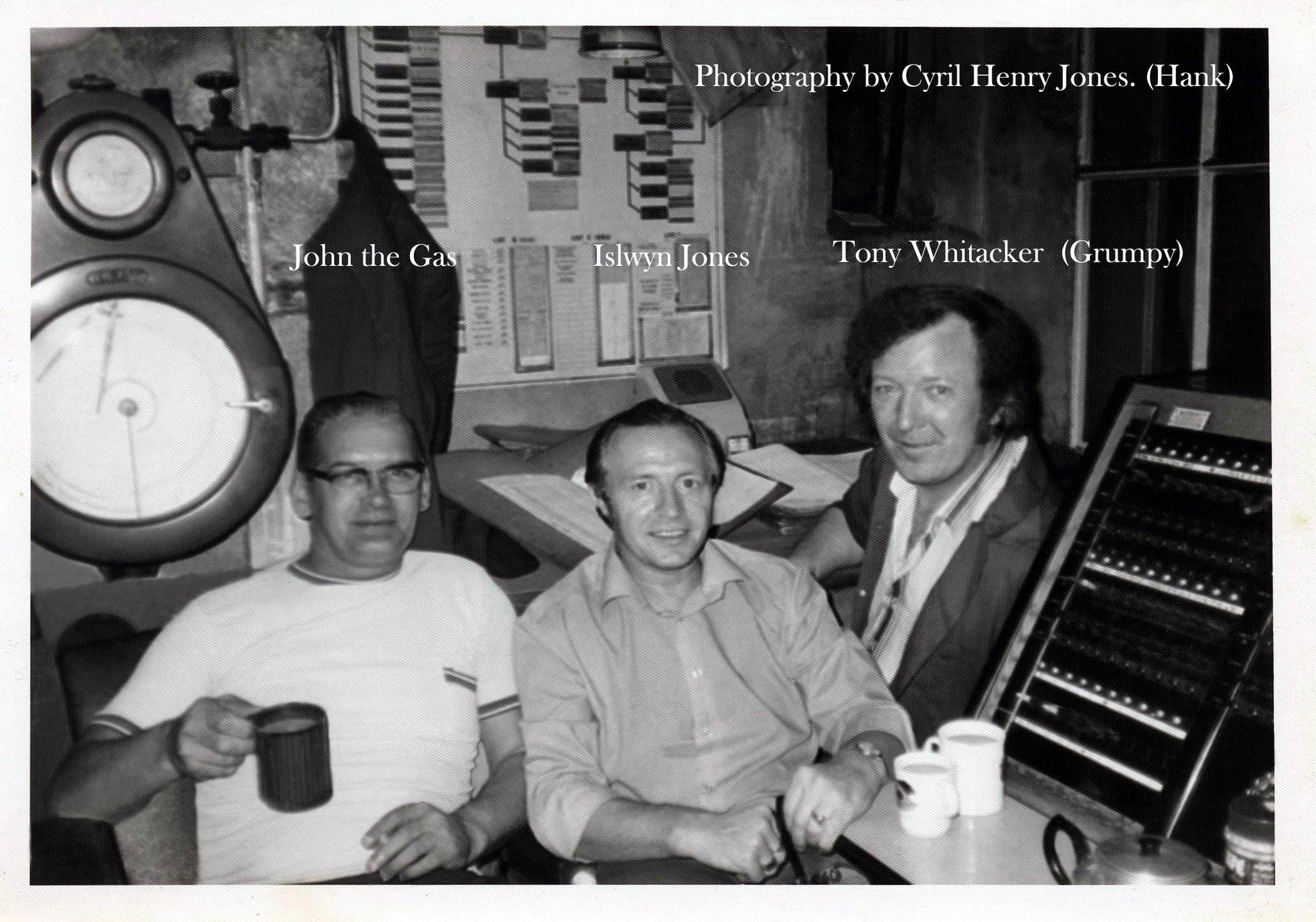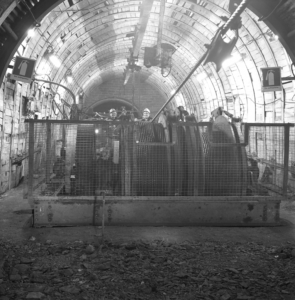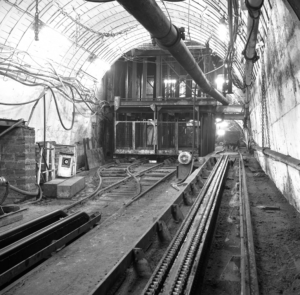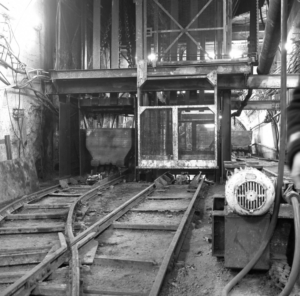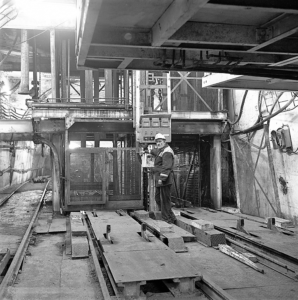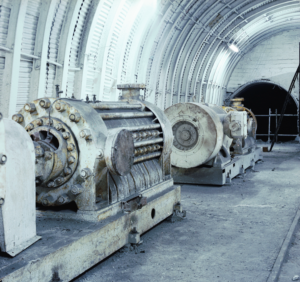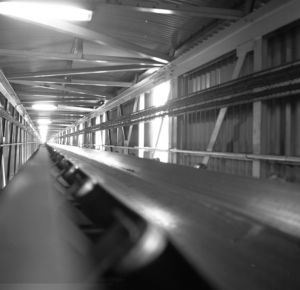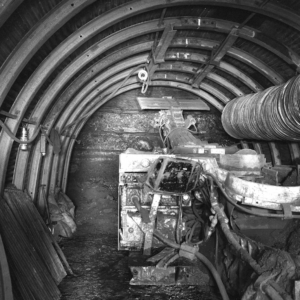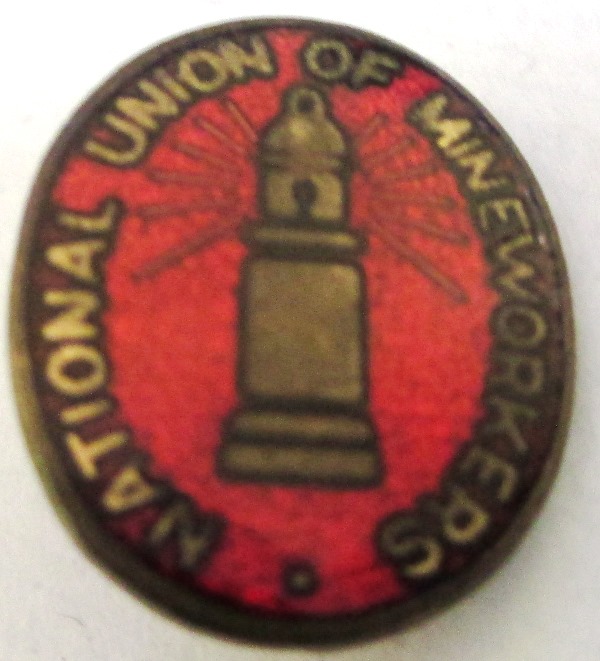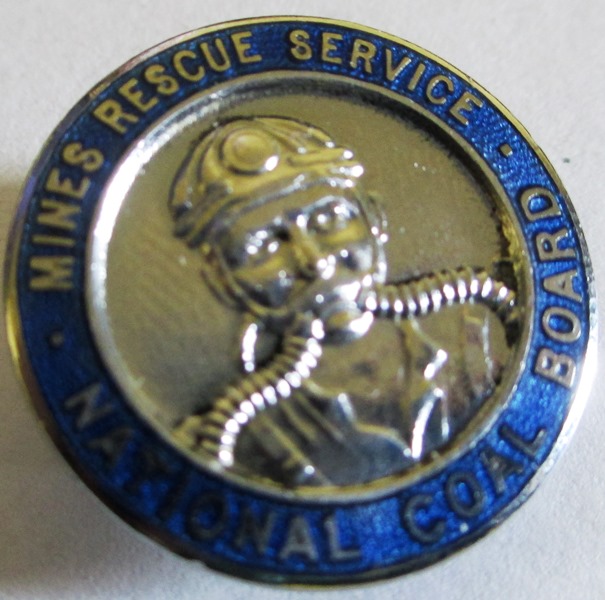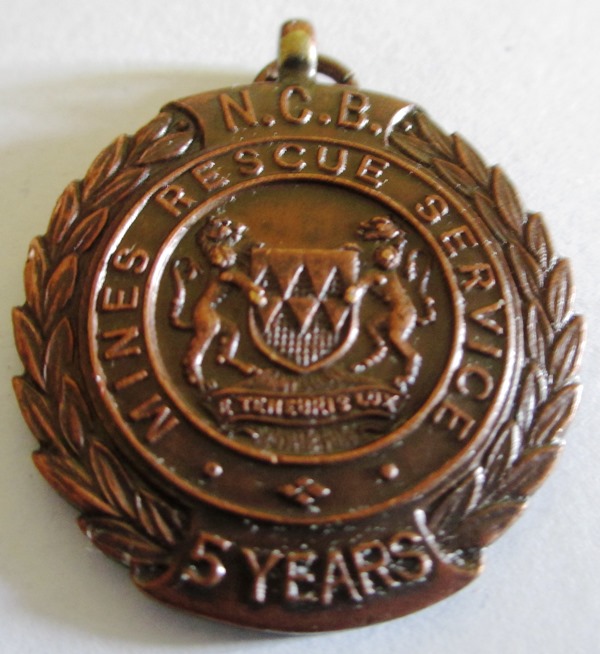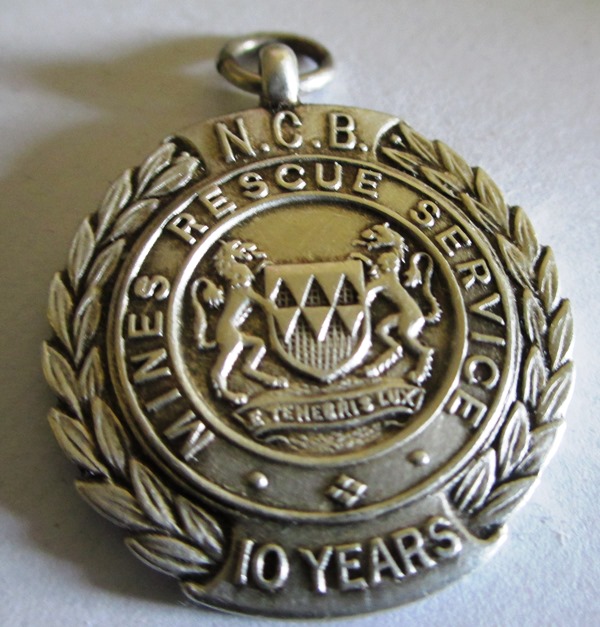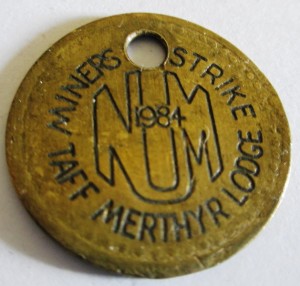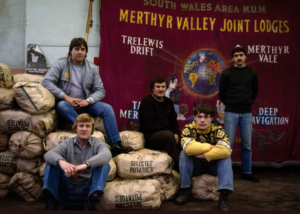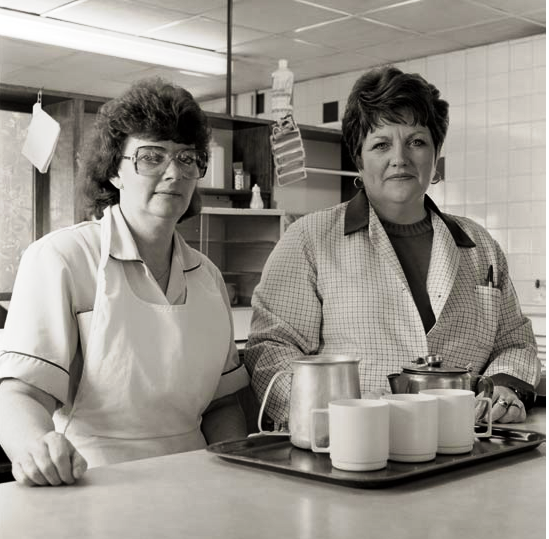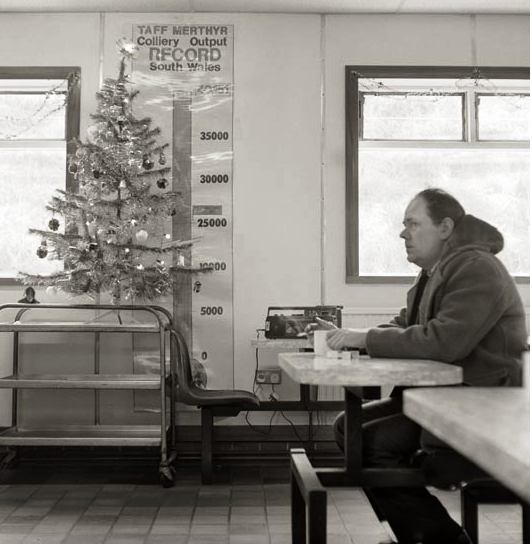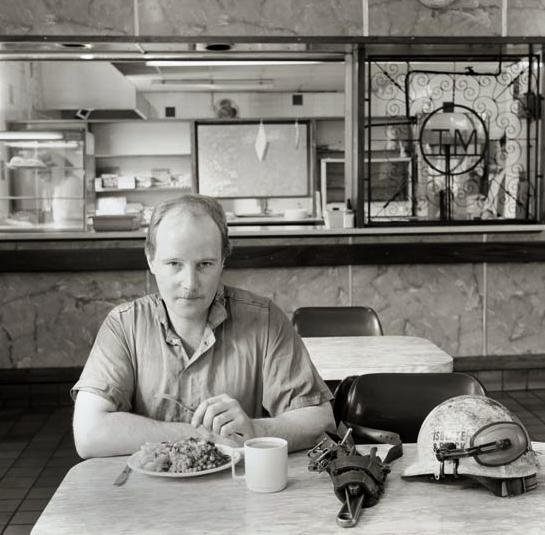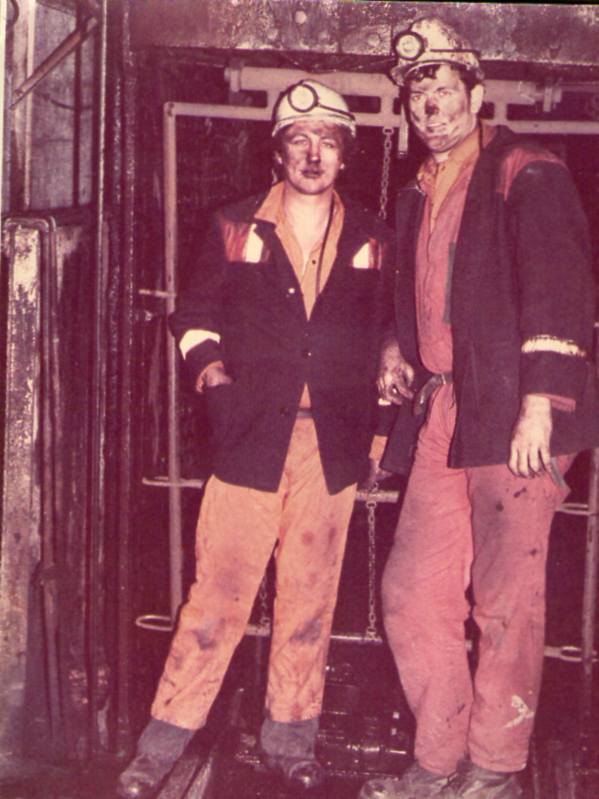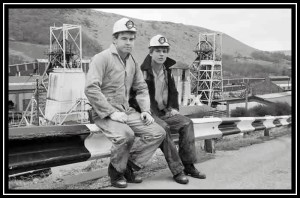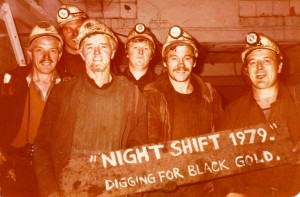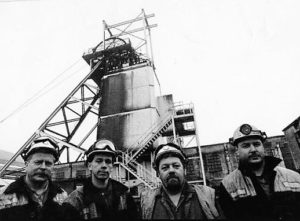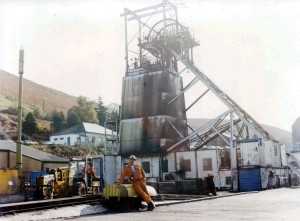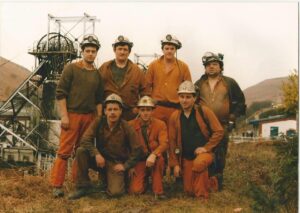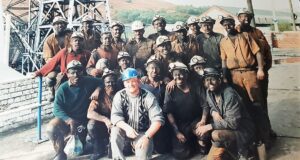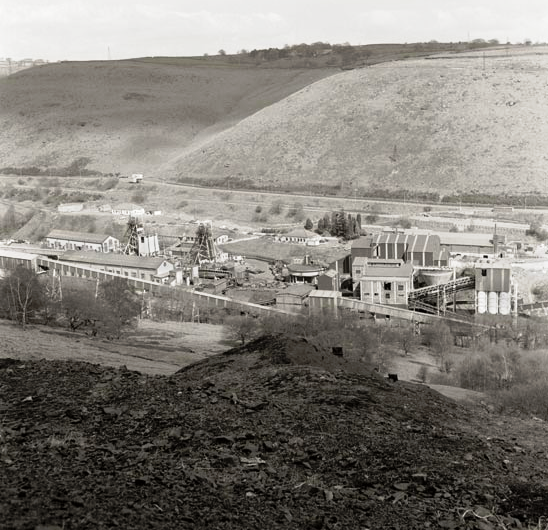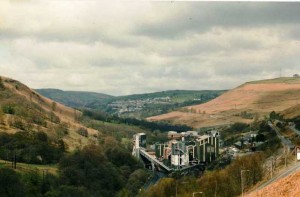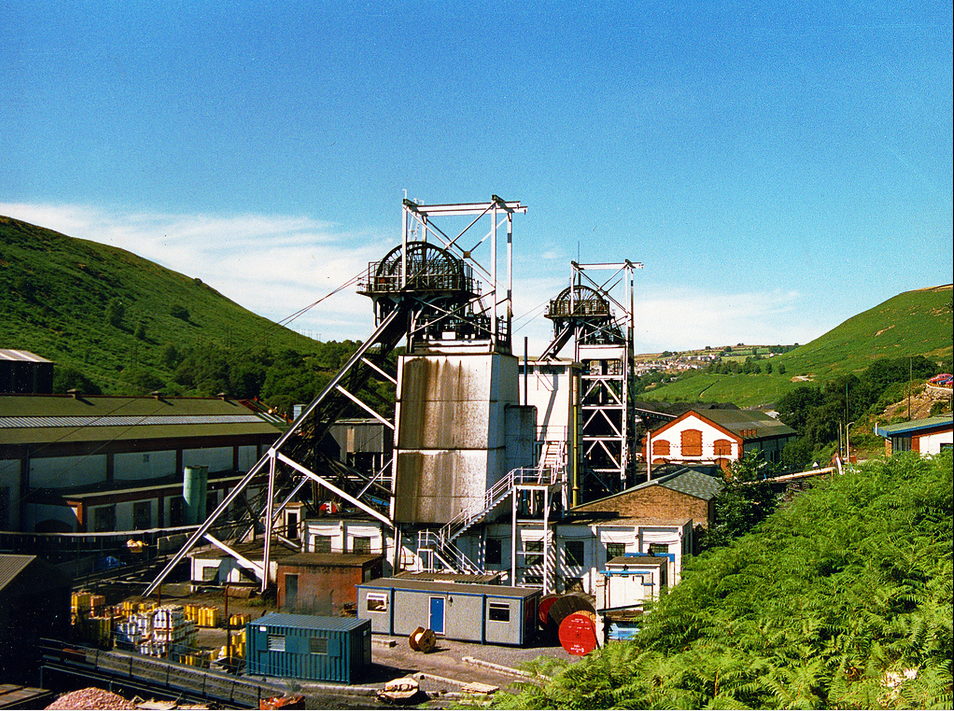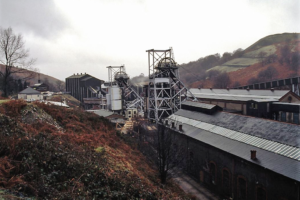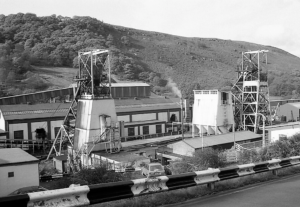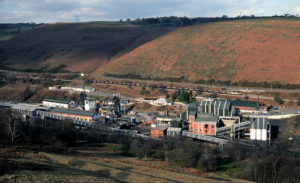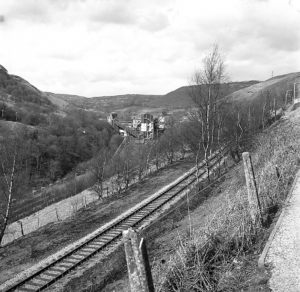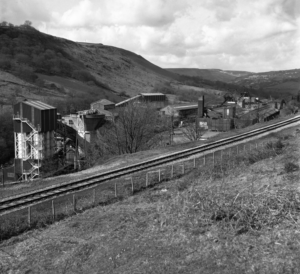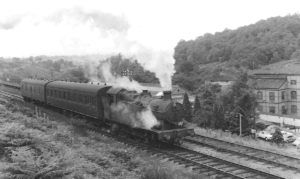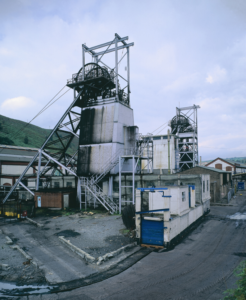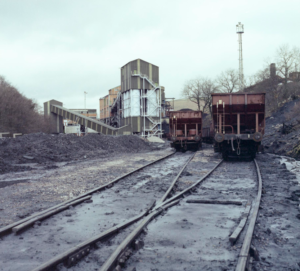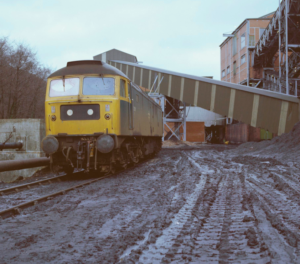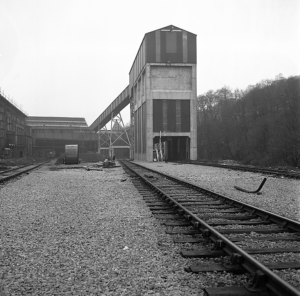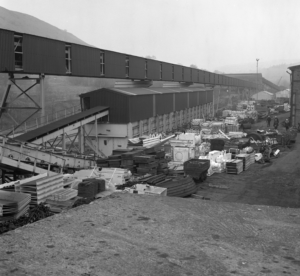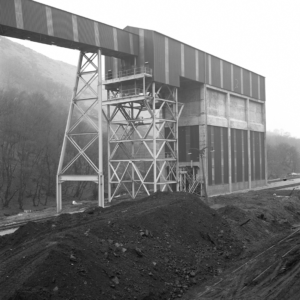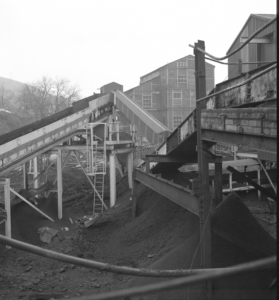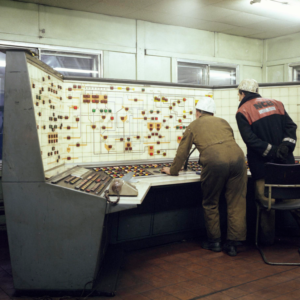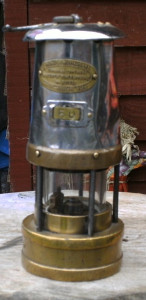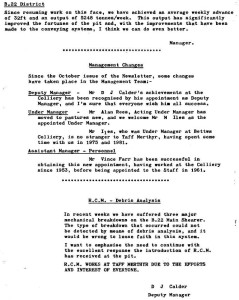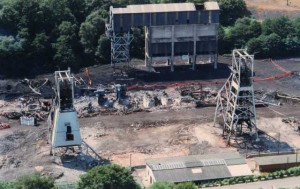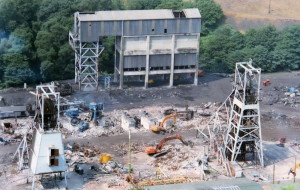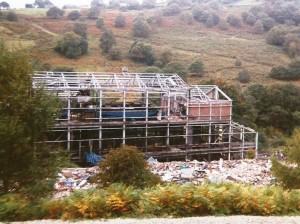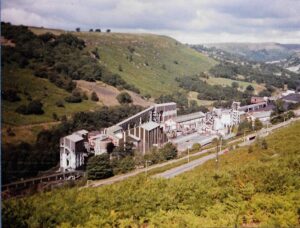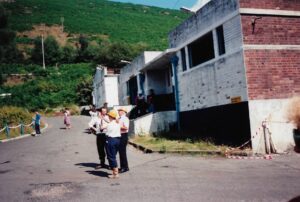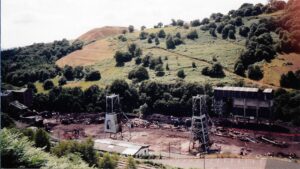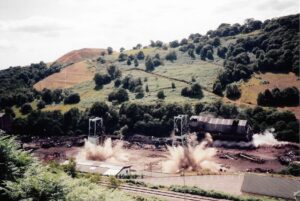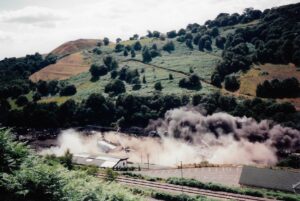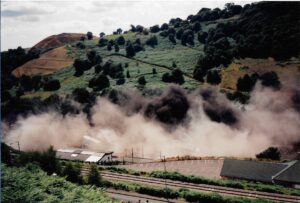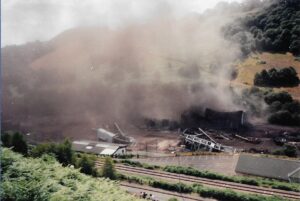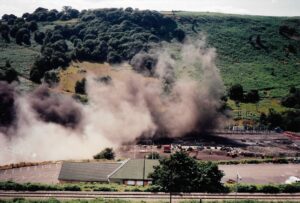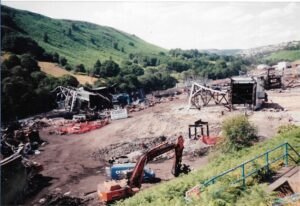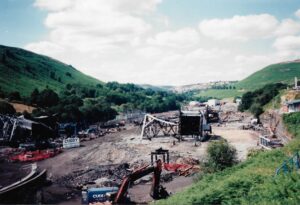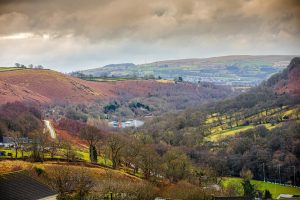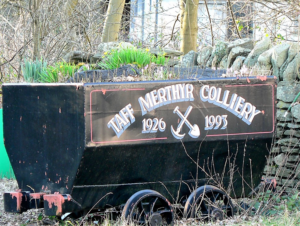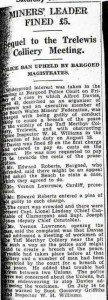Taff Merthyr Colliery
Taff Merthyr ,the History
The little hill off the main road leading to the mine
Two shafts were sunk here between 1922 and 1924, to a depth of 630 yards; both shafts had a finished diameter of 21ft, with production beginning in 1926, making Taff Merthyr one of the last to be sunk in South Wales under private ownership. The pit was owned by the Powell Duffryn and Ocean coal companies. The colliery was erected deep in the valley between Trelewis and Bedlinog.
The Bedlinog mines were closing at this time so it was a relief to the miners there that they could find work at the new mine just half a mile down the road. Men would also be employed from nearby Trelewis and with that in mind the village was extended by the building of housing in the new Taff Bargoed garden village, more commonly known as “Storm town” due to its elevated position on the side of a hill. Treharris men also found work here and the colliery employed 1,600 men by the early thirties. There was a small passenger train station built to bring men to work and there were buses run by Gelligaer council to bring workers from further afield. It had a quite modern pit head baths built and they were opened by W. E. Jayne JP IN May of 1934.
The pit began production soon after the general strike of 1926, and it was to become one of the most militant of all the south Wales collieries. The newly sunk pit became a flashpoint of bitterness and unrest.
The coal owners came to insist that no man that was a member of the South Wales miners’ Federation should be employed at the new colliery. The Pit owners set up a rival “company union” which the miners were all expected to join if they wanted to be employed at Taff Merthyr. The mine owners union was non-political and was named the south Wales miners industrial Union or “Scab” union in the eyes of the south Wales miners Federation (Feds) Throughout the late twenties and early thirties, Taff Merthyr became a major trouble spot in the struggle to defend the SWM Federation from company unionism
Taff Merthyr men at the Civic Centre in Cardiff during the dispute with the mine owners approx 1927
There is a separate item detailing the strike of 1934 and the consequences further down this page
The strikes were bitter and men fought against their fellow workmen, Many meetings were held, some in secret and many police were brought to the area Stay down strikes were held and in one incident, the owners sent strike breakers down the mine, under police protection and they fought with the Federation men who were holding the strike and forced them to surrender, over 40 men were injured in the battle.
The anger felt by the miners and their wives often spilt over into violence and many who showed sympathy of the scab union were branded as traitors, some shop windows were put through and it was reported that in the early hours of November 7, 1934,W. Bennett, the landlord of the FFaldcaiach Inn, in Trelewis, that his family were awoken by the pub windows being put through just because an old man who was working at Taff had been drinking there that night…
It was a difficult time for the colliery and its men but by the end of the thirties Company unionism was defeated and miners Federation was able to gain the initiative in the direction of the south Wales coalfield society.
Police Escort for Taff Strikers
Police checking colliery managers house asfter stones were thrown through windows
so called “scab” workers arriving at Taff Merthyr
returning from work scab miners in Bedlinog
Trelewis Post office after a striker threw stones through windows
Some of the Bedlinog Taff Merthyr men who had staged a sit in down the colliery in 1935
1934 Union leaflet
A rent payment 1934
It was a large mine which employed 1,380 men underground and 195 men on the surface by 1936, producing an annual output of 600,000 tons of steam coal per year. Bevin boys were employed at the colliery during the war. In 1945 it was reported that 1,119 men were employed at the colliery, modern equipment and techniques meant that the collieries employed less men as the years went by. Following Nationalisation in 1947 the colliery employed 153 men on the surface and 874 underground.
On January 9th 1972 miners from all over Britain came out on strike over a pay dispute, it was the first major strike since Nationalisation.50 collieries including Taff Merthyr were closed and the strike went on until the miners returned to work on February 28, following a ballot. The miners had won a pay increase that made them the almost the highest paid of the working classes and it also proved how important coal was to the British economy.
Taff Merthyr Union lodge 1971
Back Row (left to right)
Clive Giles, R Tovey, D Evans, Gwyn Williams, V Beynon, P Clarke, T Price, A Hughes
Front Row
B Gibbons(vice Chairman) Terry Donoghue (chairman) Reg James (secretary) V Williams ( Comp Secretary)
The Taff Merthyr Colliery ‘Dosco’ team at Trelewis Legion – 1970’s
Late in 1973 the miners once again found themselves lagging behind other workers in the wages department and once again Industrial action was threatened by the National Union of mineworkers, on February 9, 1974, the Taff Merthyr miners once again were on strike over pay. This time the prime minister, Mr Edward Heath decided to fight back and called a general election to show that the Conservatives had the public support against the miners…The Tories were defeated. The strike ended shortly afterwards when the new labour government reached a deal with the miners.
A 1980’s picture of Barry Yoxall, the NUM Secretary for Taff Merthyr
The mineworkers at Taff Merthyr returned to work and were delighted to hear that the new secretary of state for employment, Michael Foot had also agreed to implement a compensation deal for pneumoconiosis sufferers and new superannuation scheme which commenced the following year in 1975. It was a sweet victory for the miners but Margaret Thatcher was part of the defeated Tory party and she would be powerful enemy of the miners ten years later.
During the early seventies, 735 men were employed and they produced 340,000 tons of coal annually from the seven feet coal seam. The Gellideg seams were also going to be developed. The Up cast shaft was made deeper in 1974 to reach the five feet Gellideg seam, this was part of a major scheme to concentrate coal winding by skips in the down cast shaft.
£ 8 million was invested in the colliery in the mid-seventies and the manager at the time was Mr Graham Schewitz. The work was completed in August 1978 and it involved deepening shafts to 640 meters and building a new coal preparation plant and MGR dispatch system. The five feet Gellideg seam would finally be abandoned in November 1988.
Taff Merthyr winding house
Docket day 1980’s Robert Grizeca and Dai Powell checking their bonus
During 1982, The Taff Merthyr miners had the benefit of a new patio outside the pit canteen. The Pitman’s Plaza cost next to nothing to install, with just £30 spent on coloured paving slabs, and the rest of the work was done by on site engineers Colliery mason, Billy Thomas-a man better known as Billy Bricks-fashioned much of the terrace and a brewery provided parasols to prevent the men burning under the sun
In the Picture are miners Elwyn Evans (right) of Bedlinog Goronwy Lewis ( left) from Trelewis, with John Lee of Bedlinog in the middle
Trefor Jenkins and Bertie Bell
Once again in 1984 the miners of Taff Merthyr found themselves on strike, and it was to prove fatal for the colliery less than ten years later.
Howard Burt amongst the striking miners
The miners stayed strong throughout the twelve long months of the strike, their wives and girlfriends formed “women in support of the miners groups” The men were often on picket duty during the strike travelling to England trying to persuade working miners to join the struggle against Margaret Thatcher’s determined and ruthless government. the “chilling” statistics of the dispute, including 9,808 arrests, more than 10,000 charges, 551 complaints by miners against the police, 1,392 police officers injured, three murder charges, 682 miners sacked for “violence and sabotage” while the cost of the police operation alone was put at £200m. Around 20,000 people were injured or hospitalized, 200 people served time in prison or custody, two were killed on picket lines and three died digging for coal during the winter.
Taff Merthyr men during the long strike all stayed strong
A badge, 30 years after the strike
Yet in 1992 this colliery was amongst 31 pits scheduled for closure, despite protests and the widely held opinion that there were at least 10 years reserves of coal. Safety and maintenance work continued during a review, but it seemed inevitable that 368 coal workers would lose their livelihood when tons of rubble and other material for filling the shafts were delivered before the review was even concluded. The final shift was worked on 11 June 1993. There was talk of a miners buy out but it never materialised and the winding gear was demolished by explosion on 22 July 1994.
Filling his water jack ready for his shift
A Welsh mining record was set in Taff Merthyr colliery in September 1990 when in one week of continuous coaling, cutters travelled 234 feet and six inches to produce 40,151 tons of coal, a Welsh record for a week’s mining.
All gone below
I lost my right leg in a mining accident on the B4 face during May 1978, many other men suffered serious injury working at the mine and we must never forget the many fatalities that happened during the near 70 years the colliery existed, may they all rest in peace but there were also many happy times and a camaraderie that is impossible to explain to people who live outside mining communities, something that will always be a part of the lives of the people who worked at this great pit, memories and friendships that no government can ever take away from us.
Road out of Colliery
Road down to where baths once stood
The next section of the Taff Merthyr pages was produced thanks mainly to Cyril Hank Jones, our former banks man at Taff Merthyr. Hank will be known to most of the men that worked at the colliery between 1963 and 1989. A great character at the pit who often played pranks on the lads. Hank was also a keen photographer and weddings are his speciality.
Amongst the next set of photographs and memories we will see many items donated to the site by Hank..all much appreciated.
Above we see a copy of the coal news featuring Hank and his painted safety helmets.
A pay docket from 1971
The Pit head Baths and Top pit
I Started work as a trainee at Taff in 1975 but it was the Pit head baths in Taff Merthyr where I ended up working after my accident,in the work wear department. I started in the baths in 1985. Some of the people I remember from the baths was Jimmy Luckwell (1976) Tabs,Terry Ford, Andrew Price,TrevorSpacey, Patrick Kelleher, Mike Thomas, Derek Ivor Williams,Gary Cooper,Fussell, Keith Batten and “Bullet” in the lamp room, Jimmy Jenkins in the dotto office with Gwyn Rees, and later young Adie Gibbons, Dai Miles, Des Eynon, in the work wear dept. Ken (plastic spanners) Gareth Coles, Grouch and John Dickman in the medical centre. Great times, great blokes, some sadly no longer with us.
Above we see the entrance to Taff Merthyr baths
Typical row of lockers
Some of the many showers
Gwyn
Dai Squeak a nickname bestowed on David due to his high pitch voice 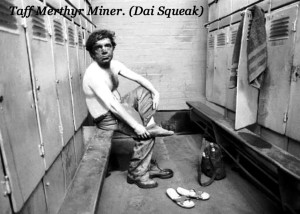
Below we see some photographs Hank took of the men who used to work in and maintain the Baths buildings.
Ken Jones who tragically passed away at home just over 25 years ago, affectionately known as Plastic spanners. R.I.P. Ken
Grouch
Gareth Coles practising on Ken, they were all excellent first aiders, although we used to tease them
Gareth Coles and Doug Hughes, not sure who their patient is.
My two old friends Gareth and Bernard, spent good times in the baths
Trevor Spacey, Baths attendant
Billy Bricks Photograph by Hank
Underground at Taff Merthyr 1978
Haulage below
Pit bottom Taff Merthyr
Pumping station Pit bottom
Main Junction heading to districts
B4 district conveyor
Dosco
The next collection are courtesy of Clive Giles, they are badges he collected or were awarded to him as a member of the Mines rescue team and NUM.
The Rescue team below
5 Year service for Clive Giles
Clive Giles 10 years service badge.
Badge from the great strike of 1984-85
Dai Miles, Paul Link, Barry Yoxall Martin Evans(twin) and Alan Williams collecting food for the strikers 1984
The next photographs are to featuring the Canteen girls at Taff Merthyr
Pearl Edmunds (left) and Dawn Hougham
Canteen with chart showing mining record attempt
Ron Rocket Evans having lunch (photos B Phillips)
Below we see another set of memorable faces courtesy of Hank 
Clive (Charlie) Vaughan, Billy and mate
Doug Exton on Pit bottom
Chris Bullock and Adam Phillips 1980
Blondie
16 year old Phil Jenkins in 1963
The old north pit cabin
1979 night shift
Herbie and Hank
Jeff Gunning and mates
Dai James,Ralph Edmunds, Pizzey
Coal face at Taff Merthyr
Percy and Hank
The pitmen, brave men that inspected the shafts
Dai the Lampman
Dai Morris and mates
kelvyn Arthur top man
John, Hank and Benny
Lewis Jones,(Wallas brother),Jackie Bevan, Maxie Herbert.
Charlie
Includes John Bryn Dai Long Viv Howells Con Collins Tommy Ginger or Tommy Scotty and Jacky Sales Photo by Doug Hughes Bedlinog
Back row Del Jones, Sid Martin Don Batten, Dennis Rees, Gilbert Jones ,George Nelmes, don’t know,Gary Gibbons,
front row Mervyn Edmunds ,Edryd Jones,don’t know Gwilym Thomas, and Eric Davies
Photos by Hank
Martin Jones and mates
Taff Merthyr pit bottom
Hank
Top pit looking at the cages South Pit
Taff at night
Two more below of some of the Taff Merthyr miners
Above we see
Back row Andrew Webber Denzil Davies ,John walford Wayne Powell front row Paul link, Dai Heggy, Gerwyn Richards
Above I can see Martin Davies, Doug Hughes and Martin Jones
Taff Merthyr girls protesting about the John Major government
Below are five examples of bus tickets men were issued to travel back and from the Taff Merthyr Colliery in 1960…Walter Vowles had a contract with the collieries to transport the men…he had quite a few coaches based at Merthyr Vale.(from the Robert Amos collection)
The following are a variety of photographs donated by various contributors, all related to Taff Merthyr Colliery
A miner at Taff Merthyr, looks a bit like Barry Yoxall but I am unsure.
Jeff Gunning, ? Chris Watkins(Bunny,? Taff Merthyr men
Taff Merthyr…A view from the other side of the valley by R Williams
Another view courtesy of Bob Phillips
A sunny day at TM…(Pic courtesy of R Amos)
Taff Merthyr 1990 by Richard Williams.
Looking over from the Farms at Taff Merthyr by Richard Williams 1991
Our Taff Merthyr
Taff Merthyr and Trelewis Drift at night 1990 by Richard Williams
Colliery Surface
control room
Some Items used at the Colliery
Taff Safety lamp
Safety checks
Some Taff Merthyr miners (photo copyright of Andrew Johnson)

